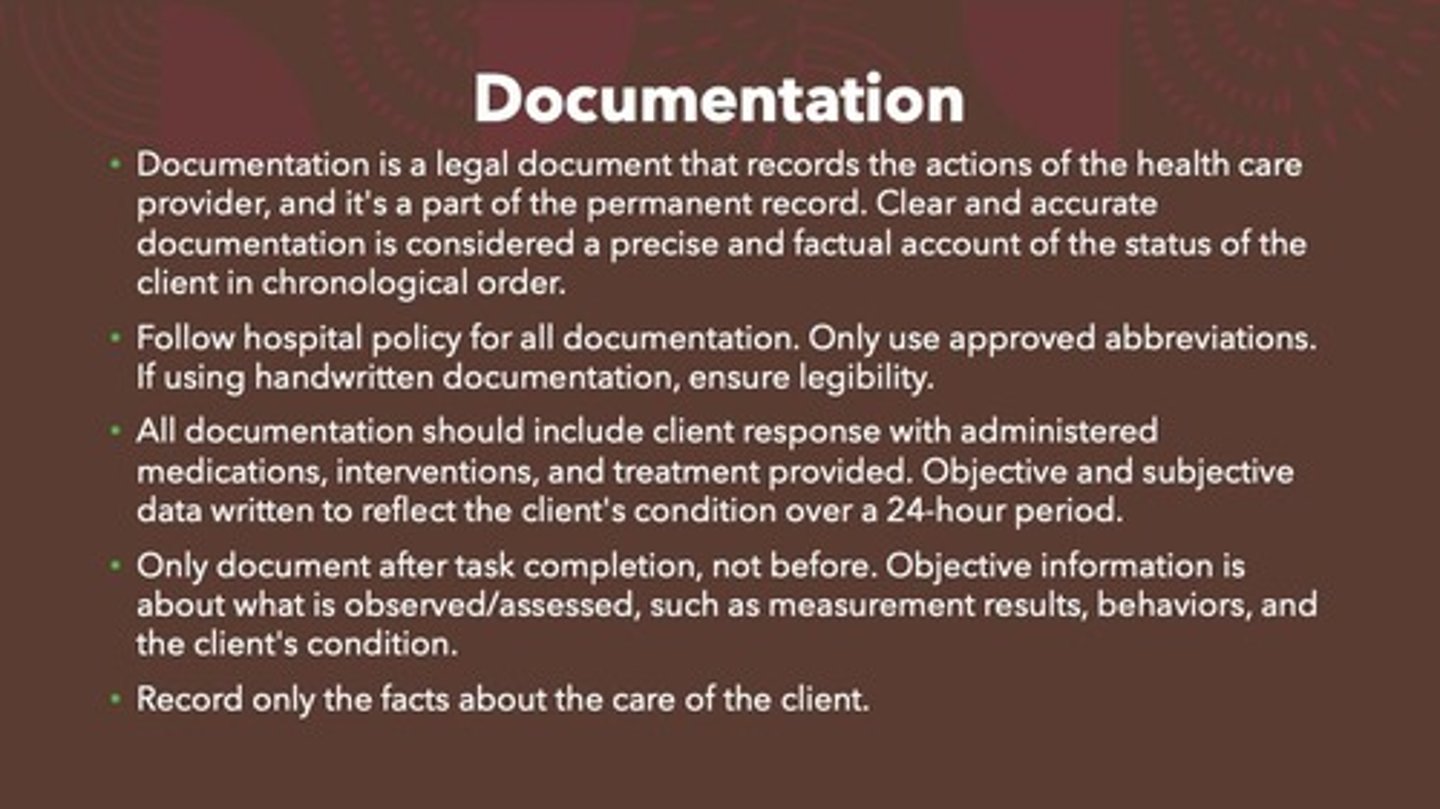Introduction to Health Assessment and Nursing Process
1/33
There's no tags or description
Looks like no tags are added yet.
Name | Mastery | Learn | Test | Matching | Spaced |
|---|
No study sessions yet.
34 Terms
Health Assessment
Collection and evaluation of client information.
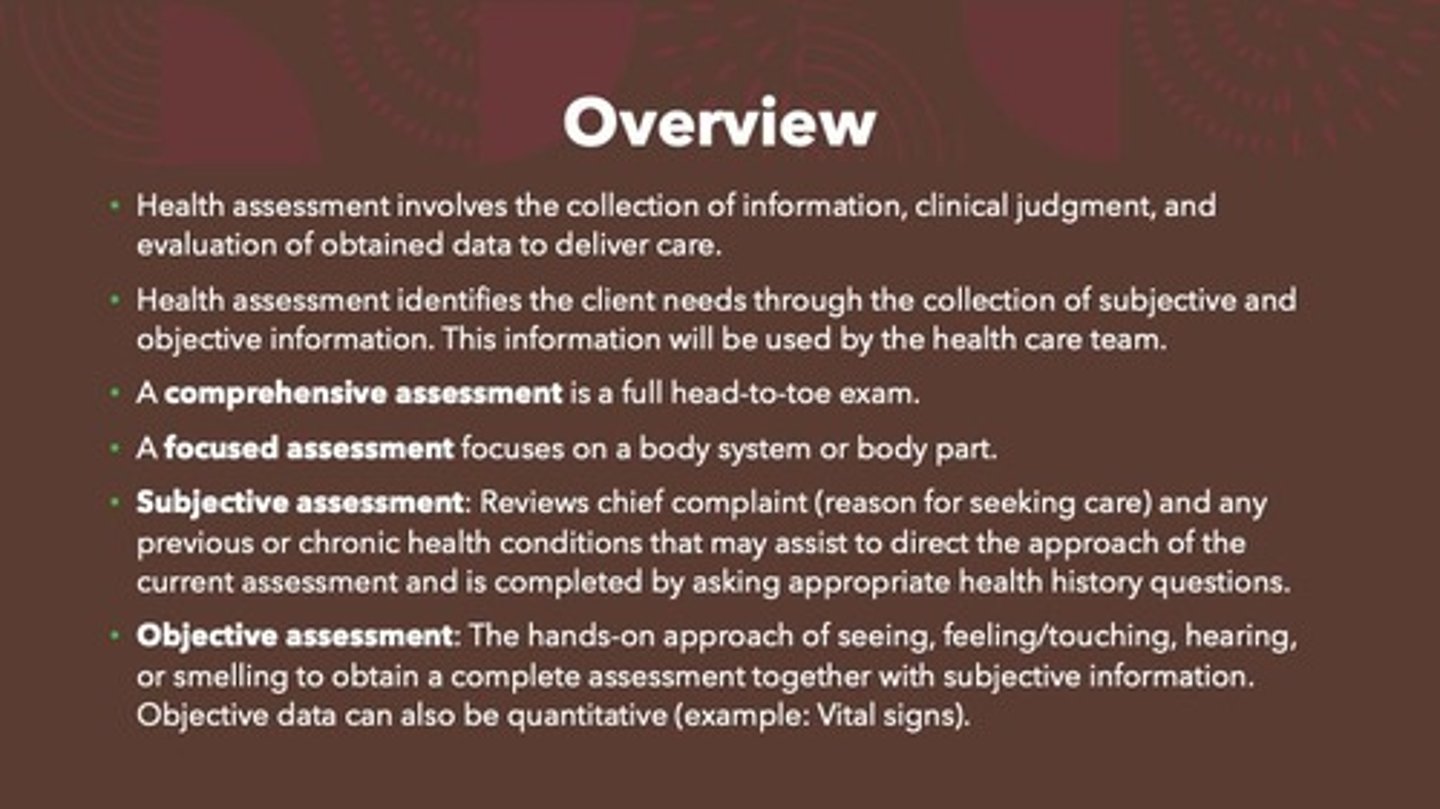
Comprehensive Assessment
Full head-to-toe examination of the client.
Focused Assessment
Examination of a specific body system or part.
Subjective Assessment
Information based on patient's personal experiences.
Objective Assessment
Data obtained through physical examination techniques.
Subjective Data
Patient-reported symptoms and health history.
Objective Data
Quantifiable information like vital signs.
Plan of Care
Collaborative strategy addressing client needs.
Evidence-Based Practice
Using research to guide clinical interventions.
Health Record
Legal document communicating assessment findings.
Nursing Process
Structured approach for client care delivery.
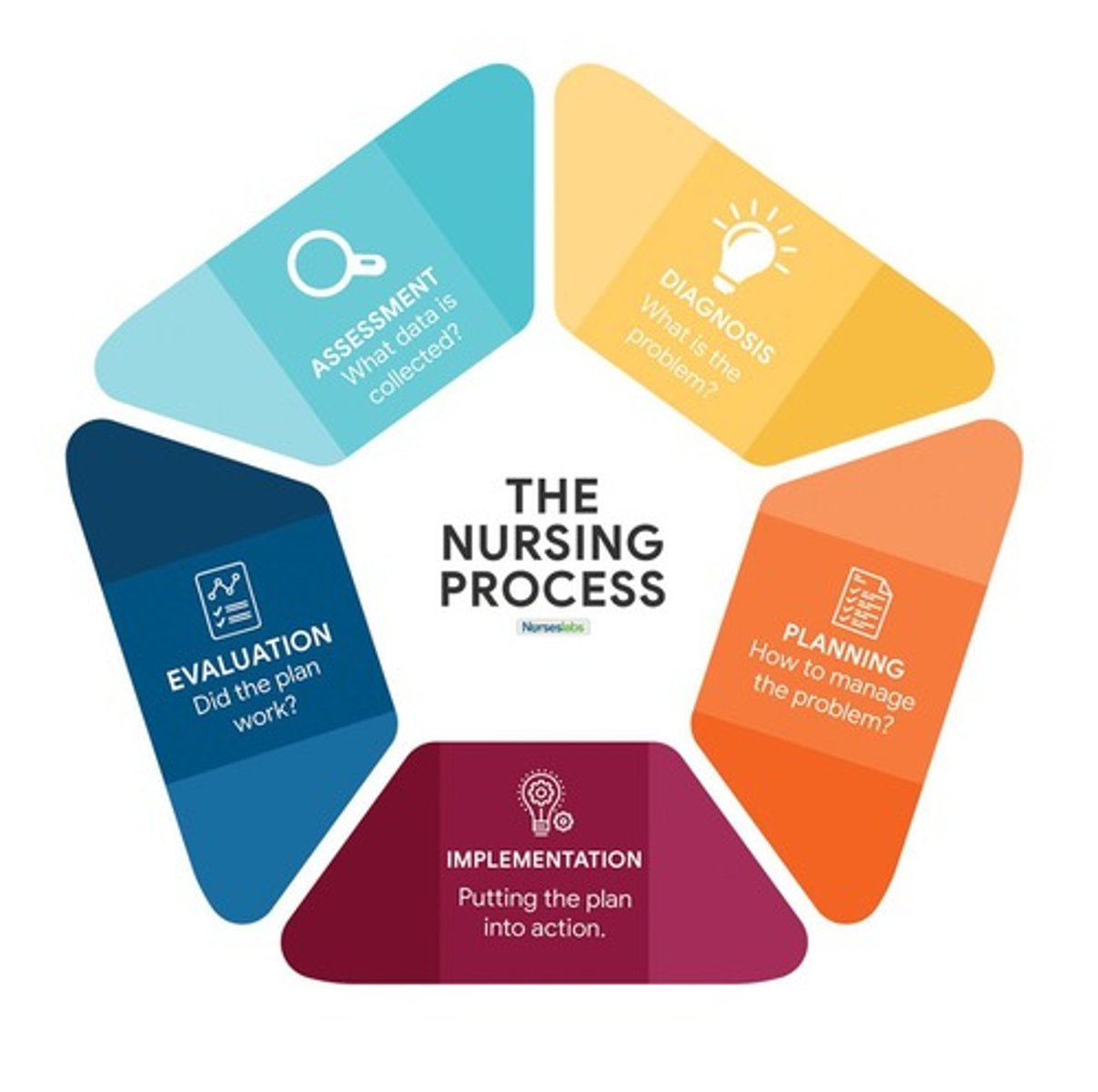
Assessment Phase
Information gathering through interviews and exams.
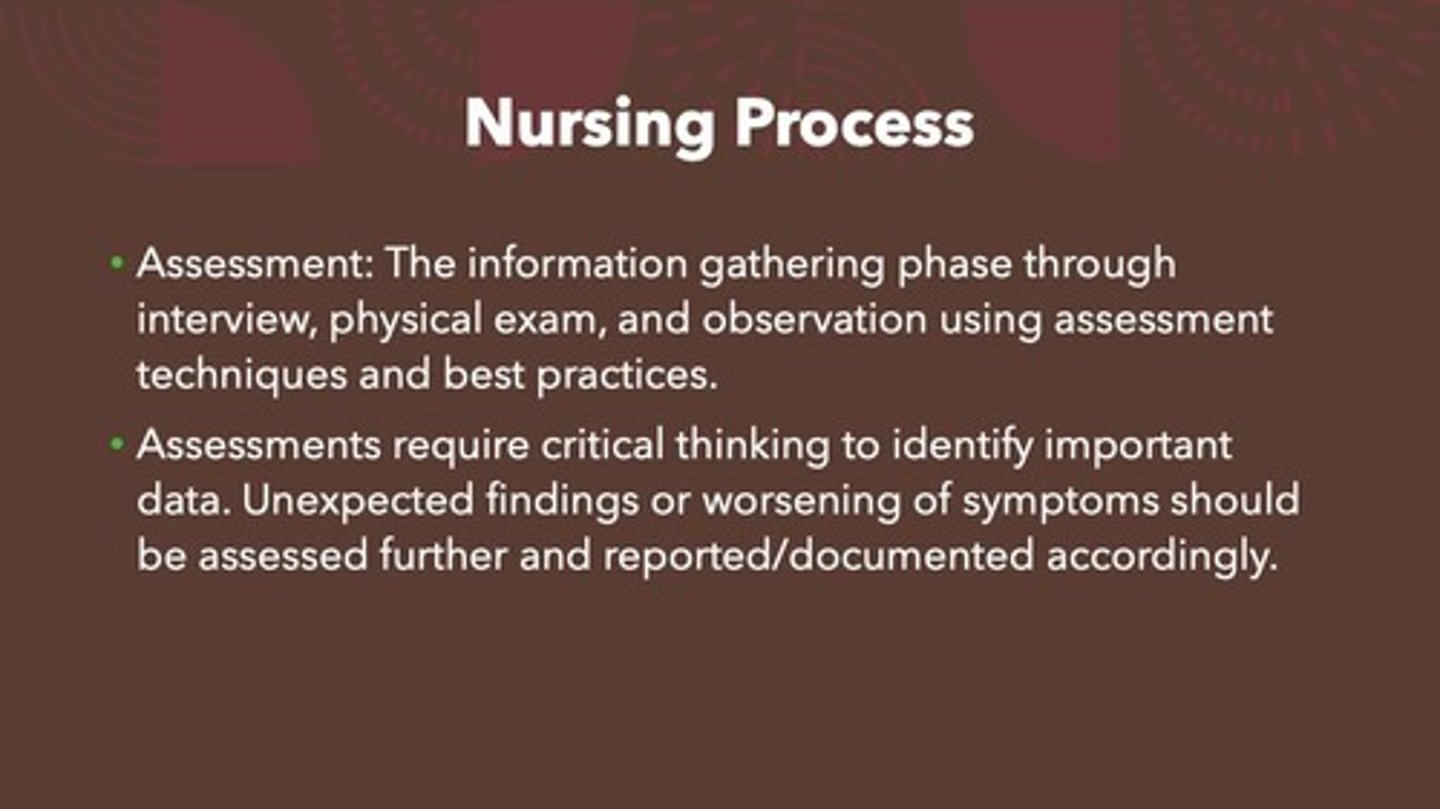
Analysis Phase
Data evaluation to develop care plans.
Nursing Diagnosis
Identification of prevalent client health issues.
Planning Phase
Prioritizing care based on client outcomes.
Implementation Phase
Carrying out nursing interventions and monitoring progress.
Evaluation Phase
Assessing effectiveness of care and adjusting plans.
Contextual Awareness
Understanding client's background and care reasons.
Analyzing Assumptions
Evaluating clinical situations to modify approaches.
Exploring Alternatives
Considering holistic treatment options for clients.
Using Credible Sources
Incorporating standards and guidelines for practice.
Reflecting and Deciding
Self-reflection to choose best interventions.
Non-Maleficence
Ethical principle: do no harm.
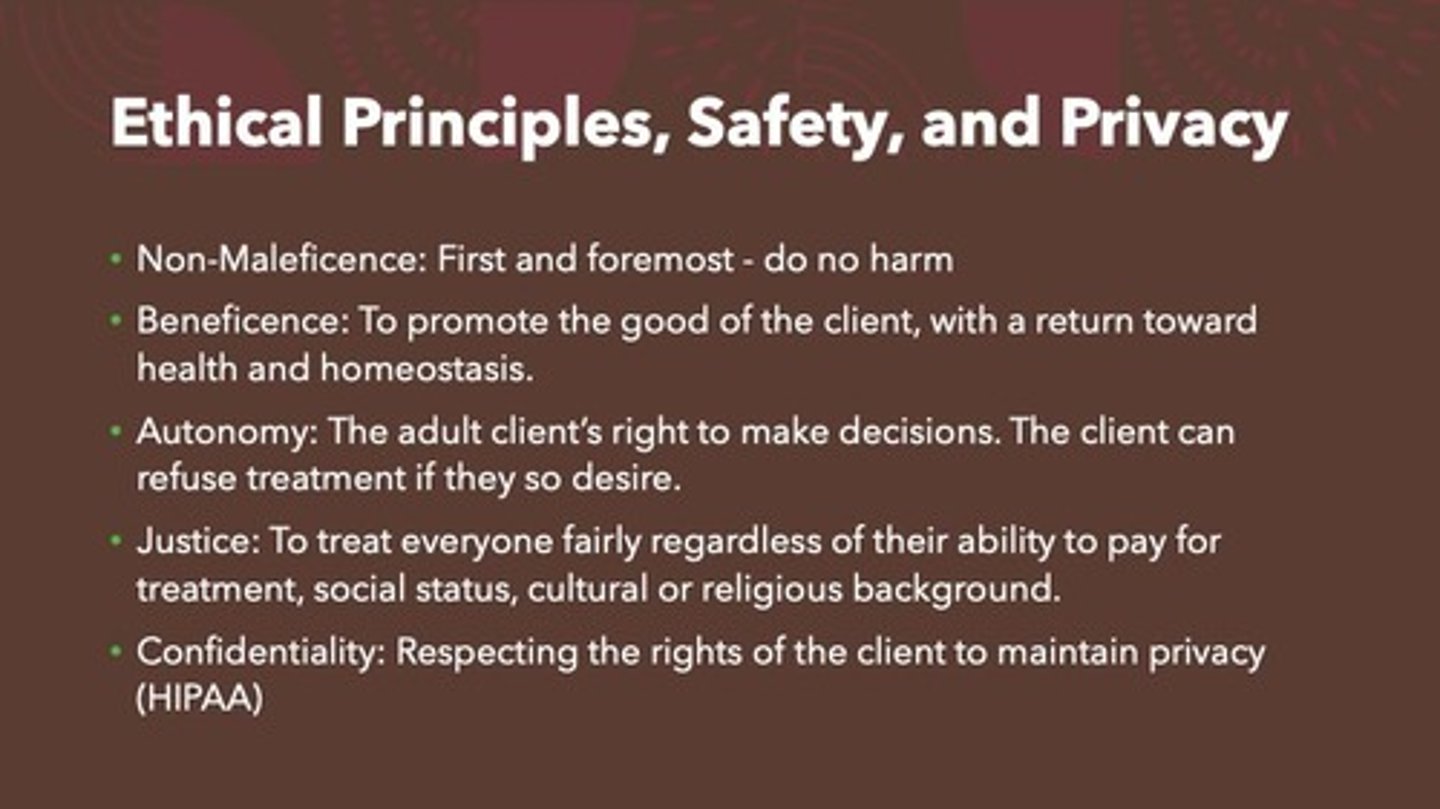
Beneficence
Promoting client well-being and health.
Autonomy
Client's right to make their own decisions.
Justice
Fair treatment regardless of client background.
Confidentiality
Respecting client privacy and HIPAA regulations.
Therapeutic Communication
Professional interaction to build client rapport.

ISBARR
Structured communication for healthcare team interactions.

Inspection
Visual examination for body symmetry and conditions.
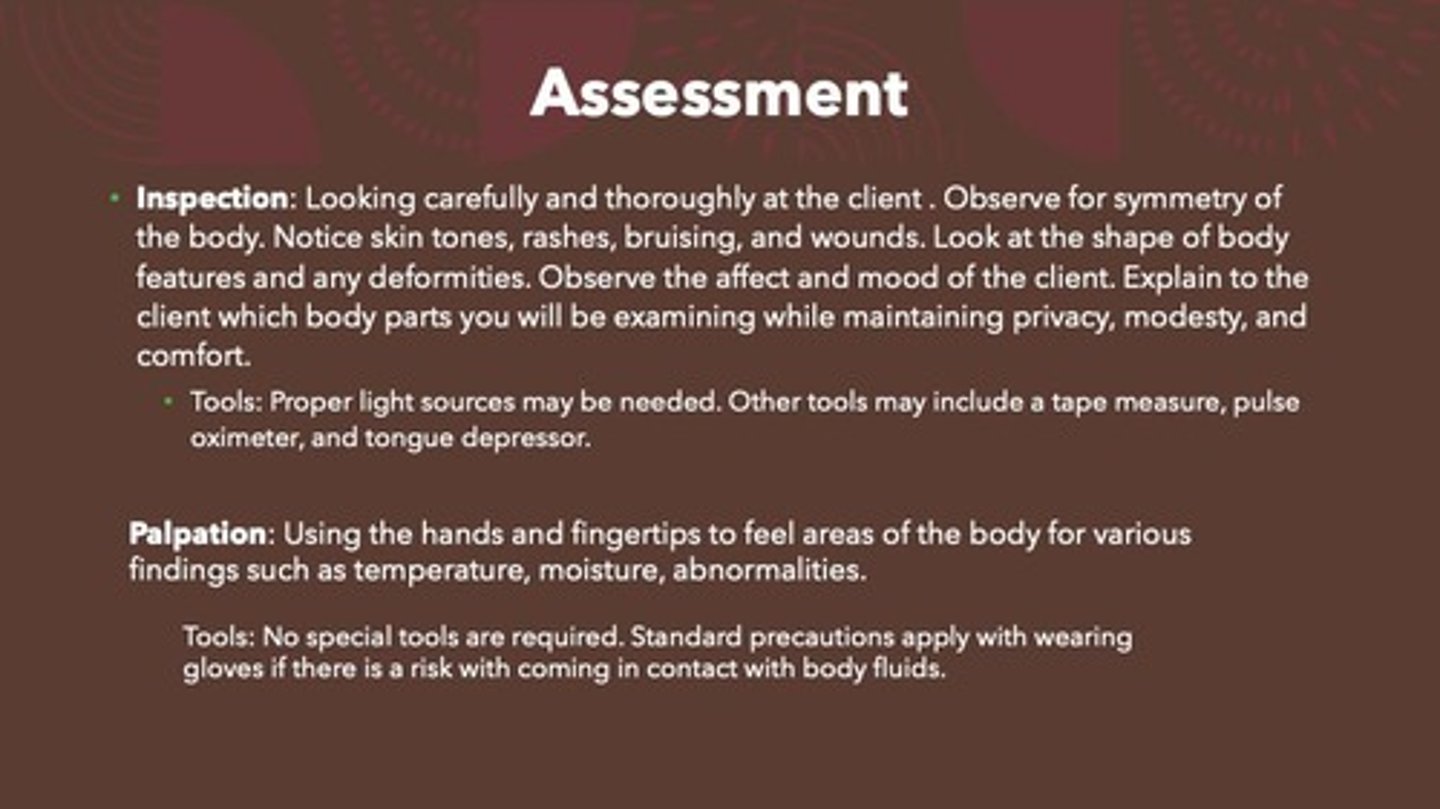
Palpation
Feeling body areas for abnormalities and conditions.
Auscultation
Listening to internal body sounds with a stethoscope.
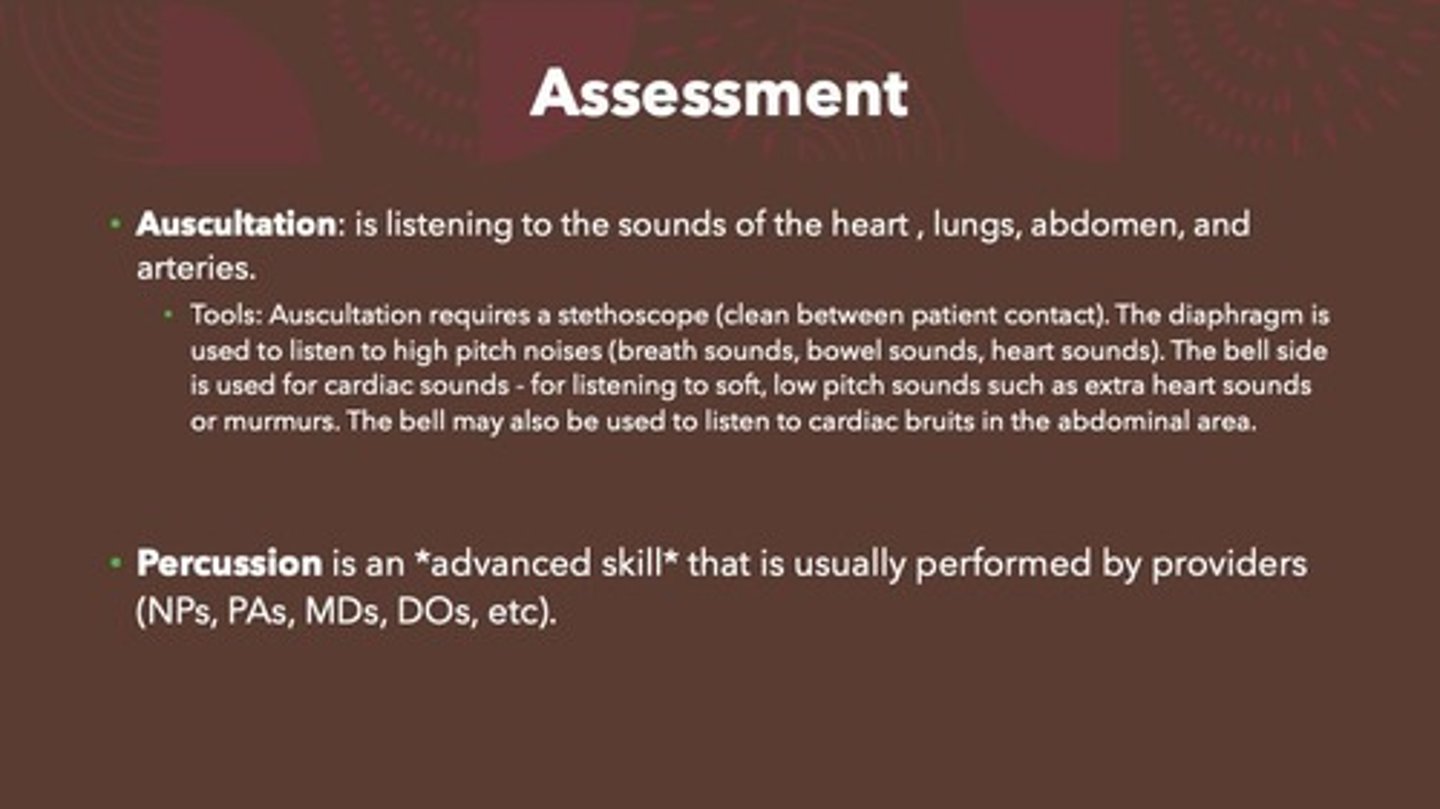
Percussion
Advanced technique to assess body structures.
Documentation
Legal record of healthcare provider actions.
